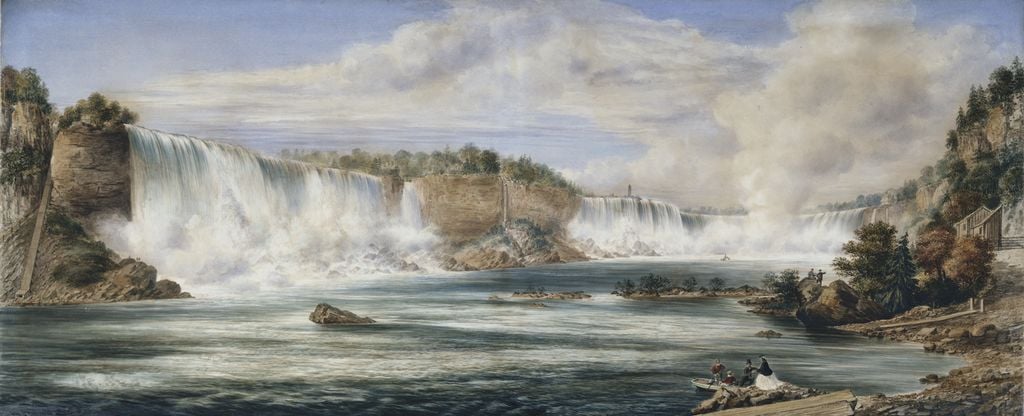
Canada
Explore The Royal Family's close relationship with the region, as well as the diverse artistic traditions represented in the Royal Collection
'The Country of the Canadas' - Colonial Canada
The first Europeans to travel to Canada were probably the Vikings around the year 1000. The small enclosures they built in Newfoundland were probably only for seasonal use and did not last very long. In the fifteenth and sixteenth centuries, Basque, Portuguese, English and French fishermen and explorers became the next Europeans to visit the country, traversing the coasts of Nova Scotia, Newfoundland, Labrador and the Canadian Arctic and venturing up the St Lawrence River. It was on the St Lawrence River, after encountering two large Iroquois (Haudenosaunee) settlements, that the French explorer Jacques Cartier, named this vast territory ‘the country of the Canadas’. The term was probably taken from the Iroquoian word kanata, meaning village or encampment.
The early seventeenth century saw the French begin to settle in Canada, principally focusing on the lands around the St Lawrence River, the Great Lakes and Acadia (now Nova Scotia). Eventually becoming known as Canadiens, French settlers established good relations with First Nations who assisted them in taking advantage of the abundant supplies of fur, which was highly prized in Europe. Several traders, known as voyageurs, also married into Indigenous communities, their children creating a distinct Métis culture, which combined both French and Indigenous customs.
English (later British) traders and settlers also travelled across the Atlantic, building fishing camps in Newfoundland and trading posts on the shores of Hudson’s Bay. In 1670, Charles II founded the Hudson’s Bay Company by Royal Charter, which granted English traders a monopoly on the fur trade throughout a vast swathe of territory, known as Rupert’s Land. The charter brought Britain and France into conflict several times over the next hundred years, which culminated in General James Wolfe’s siege and capture of the city of Quebec in 1759. This campaign, part of the wider Seven Years’ War, ensured British control over much of the land that now forms Canada.
British North America
Following the American War of Independence, some 60,000 Loyalists fled from the United States of America to Canada, where they found new homes in Upper Canada (now Ontario), New Brunswick, Nova Scotia and Newfoundland. This mass migration of both settler and Indigenous communities, supplemented by new emigrants from Britain, ensured that tensions between French- and English-speaking Canadians remained. In 1837, this erupted into armed rebellion. Focused mainly in the French-speaking province of Lower Canada (now Quebec), with smaller uprisings in favour of political reform in English-speaking Upper Canada, the rebellion was quickly ended by colonial forces, with Queen Victoria reporting in her Journal on receiving the despatches that it was ‘joyous news indeed!’. The events were of obvious interest and concern to the young queen: she reported on them over 100 times in her Journal and would continue to note Parliamentary debates on the reforms that followed, which united the two Canadas into one province.
Find out more about the Royal Family’s early connections with Canada by clicking on the objects below.







